I rarely post about anything work-related on this blog (the last time was over a year ago), but I really wanted to write about this one. I’ve been a huge supporter of VR and the Rift since before the kickstarter, but the overwhelmingly positive reception when I had the chance to use it in a public demonstration still surprised me.
Background
There is an annual event at Austrian universities called the “Lange Nacht der Forschung” (Long Night of Research). Basically, for one evening/night – starting at 17:00 and going on until 24:00 – the Universities prepare demonstrations, talks and interactive sessions about research for a general public. It’s (surprisingly?) popular, with 136500 visitors this year. There’s a great variety of visitors, students, families with their children, and even seniors.
Our Demonstration
This year, our group was asked to do a demonstration again. Since I wanted to do something which is both related to our current research and engages people I had a pretty hard time coming up with ideas. In the end, I settled on taking the result of one of our compiler analysis methods (designed and implemented by Herbert Jordan) which generates a Petri net representing the parallel execution of a program, and visualizing it in VR using the Rift.
I had a prototype up and running using OpenSceneGraph, but with the recent release of UE4 with licensing for mortals, I decided to try it using that. With just a bit over a week to go (and, it turned out, a few graph layout papers to read and 3D models to create in addition to getting used to coding for and working with a huge engine from scratch) it was a tight squeeze, and quite exhausting, but I completed it in time.
If you can read German you can find more detail here. Basically, it’s a set of nodes (2 types) floating in space, connected by “bridges” representing graph edges, and with pillars showing the ID of the related program node/construct, as well as (optional) “monitors” showing the associated code for e.g. region constructs. Here’s a screenshot:
For the actual demonstration at the event we also had a 30″ screen mirroring the Rift output set up, so that people could see what’s going on, as well as a copy of the poster I linked above to explain the context of what was being presented.
The Reactions
Now we get to the part which is actually interesting. I was really curious how these “normal” people would react to the Rift. I am happy to say that the overall reaction was much more positive than I expected, despite all the technical shortcomings of DK1. We had a group of people watching and waiting for their turn for the entire duration of the event (so 7 hours, actually closer to 7 and a half if you take all the time before and after the official start into account), and probably around 250 people using the Rift.
We had a wide range of visitors over all age and gender boundaries – with families, normally it would be the kids trying the Rift first and then convincing their parents or grandparents. Here are a few photos:
- The typical stare upwards
- Lots of onlookers, and someone didn’t get enough sleep
- VR is for everyone
- Sadly, you can’t touch things yet
- The team
- We sometimes had trouble with people wrapping themselves in the cables
- A very common expression
- Sometimes, the Rift was almost as large as the user’s head
- In the background you see someone grinning madly
- Watching people in Vr seems almost as entertaining as using it yourself
Some remarkable incidents and things of note I observed:
- We actually had to reassure people multiple times that “we’ll still be here for 5/4/3 hours” during the most crowded periods.
- Upon it being explained that importing DK2 to Austria will cost about 400€, most people were surprised at how inexpensive that is. One particular remark I remember is a boy (probably elementary school age) exclaimed “Wow, that’s 100€ less than the new Xbox!”.
- A young woman in her early 20s telling her boyfriend “we need one of these at home” after walking around in the demo for 2 minutes.
- More people recognized the Rift than I expected. I’m sure some of that had to do with the Facebook deal and the reporting around it.
- You could easily tell if someone who tried it was familiar with twin stick FPS gameplay. Gamers would zip around using both sticks, but often fail to move their head and just look at stuff until prompted to do so. On the other hand, non-gamers would turn exclusively using their head/body, and be in danger of getting wrapped up in cables.
- “Mom, can I get this for Easter?”
That’s it, pretty much. After this exhausting but fun experience I’m more certain than ever that VR will not just become big, it will do so very quickly. Oh, and I’d like to thank Philipp Gschwandtner for helping me with the demo, and for taking all the good pictures you see in the gallery above. The bad ones were taken by me.


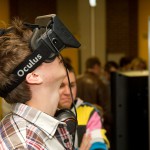
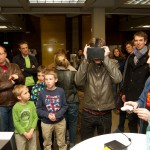
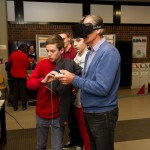
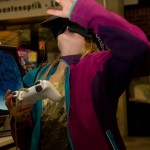
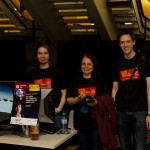
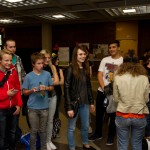
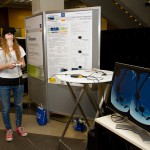
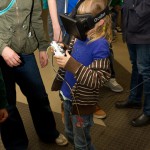
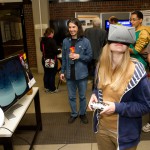
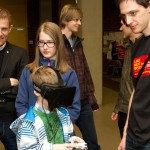
Hi Peter,
very interesting project. Do you have a video where the simulation can be seen?
Sadly, we didn’t have an opportunity to record some video at the event.
Ja, jetzt hat VR auch mein Interesse geweckt